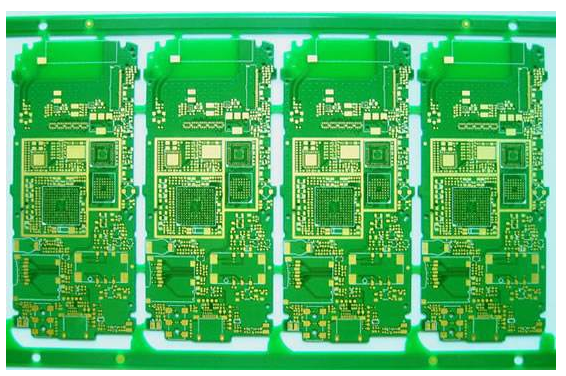Comparison of common sheet performance parameters
The parameters that have the greatest impact on the design and processing of the PCB are mainly the dielectric constant and the loss factor. For the multi-layer board design, the selection of the board also needs to consider the processing and punching and lamination properties. The following is the parameter description of several PCB boards such as FR4/PTFE/F4/S1139/RO4350.
Performance parameters
FR4 S1139 RO4350 F4(SGP-500)) PTFE
Dielectric constant 4.2 5.4 3.48 2.6 2.5
Loss tangent ≤0.035 0.008 0.004 0.0022 0.0019
εr temperature coefficient N/A N/A 50 N/A N/A
Coefficient of thermal expansion N/A 21 14 16 21
Copper foil peeling strength N/A 10 2.9 0.9 2.9

The processing technology is difficult and easy. N/A is equivalent to FR4 and equivalent to FR4. The surface needs special treatment when processing through holes.
Based on the above analysis of transmission line characteristic impedance, loss, propagation wavelength and sheet comparison, product design must consider cost and market factors. Therefore, it is recommended that in the PCB design, the designer chooses the board to consider the following key factors:
1. For PCBs that work below 1GHz, FR4 can be used, with low cost and mature multi-layer laminate technology. For example, the signal input and output impedance is lower than 50 ohms, and the characteristic impedance of the transmission line and the coupling between the lines need to be strictly considered when wiring. The disadvantage is that the FR4 sheets produced by different manufacturers and different batches are differently doped, and the dielectric constant is different from 4.2 to 5.4, and is unstable. .
2. For large-signal microwave circuits below 3GHz, such as power amplifiers and low-noise amplifiers, it is recommended to use double-sided plates similar to RO4350. RO4350 has a fairly stable dielectric constant, low loss factor, and good heat resistance. The processing technology is equivalent to FR4. The cost of the sheet is slightly higher than FR4 by about 6 minutes/cm2.
3. Different signal working frequency has different requirements for the plate.
4. For optical fiber communication products above 622Mb/s and small-signal microwave transceivers above 1G and below 3GHz, modified epoxy resin materials such as S1139 can be used. Because the dielectric constant is relatively stable at 10GHz, the cost is much lower. The laminate process is the same as FR4. Such as 622Mb/s data multiplexing branching clock extraction small signal amplification optical transceiver, etc., it is recommended to use this kind of board, so as to make multi-layer boards. The material thickness is not as complete as FR4. Or, use RO4000 series such as RO4350, but the RO4350 double panel is generally used in China. The disadvantage is that the number of different thicknesses of these two plates is not complete, and it is not convenient to produce multi-layer printed boards due to the requirements of the thickness of the plates. For example, RO4350, sheet manufacturers produce four sheet thicknesses such as 10mil/20mil/30mil/60mil, and currently there are fewer domestic imports, which restricts laminate design.
Five, wireless mobile phone multi-layer PCB board requires a low dielectric constant, a low loss factor, a low cost, and a high dielectric shielding requirement. It is recommended to use a board with a performance similar to PTFE, such as the United States/Europe, or a combination of FR4 and high-frequency board. Connected to form a low-cost high-performance laminate.
6. Microwave circuits above 10GHz, such as power amplifiers, low-noise amplifiers, up-down converters, etc. have higher requirements on the board. It is recommended to use double-sided boards with a performance equivalent to F4.
7. Typical RF/digital multi-layer board structure, laminated board based on RO4350 high-frequency sheet, its possible strip line and microstrip transmission line